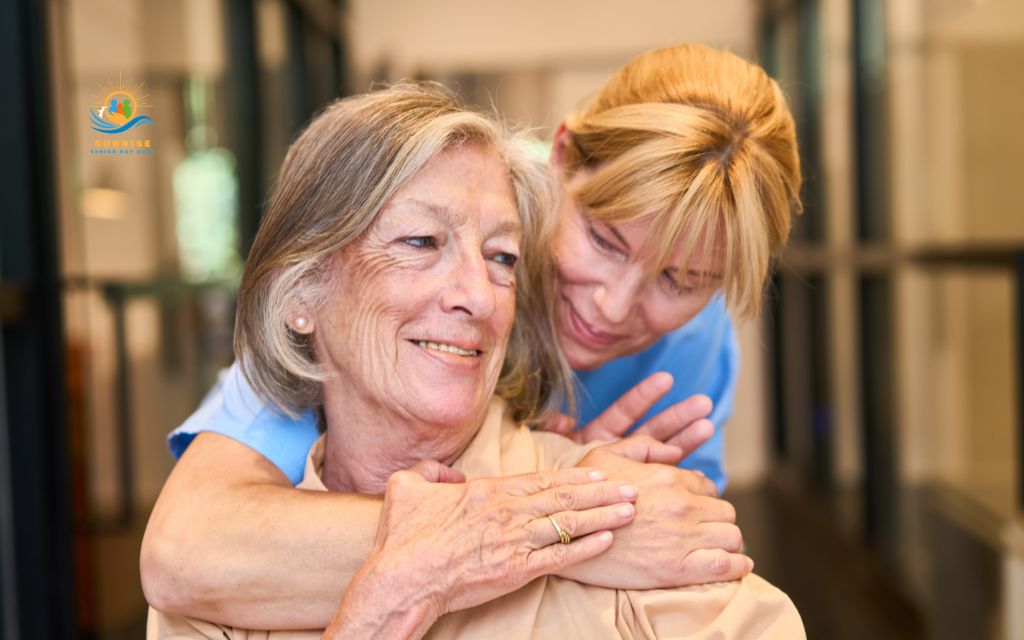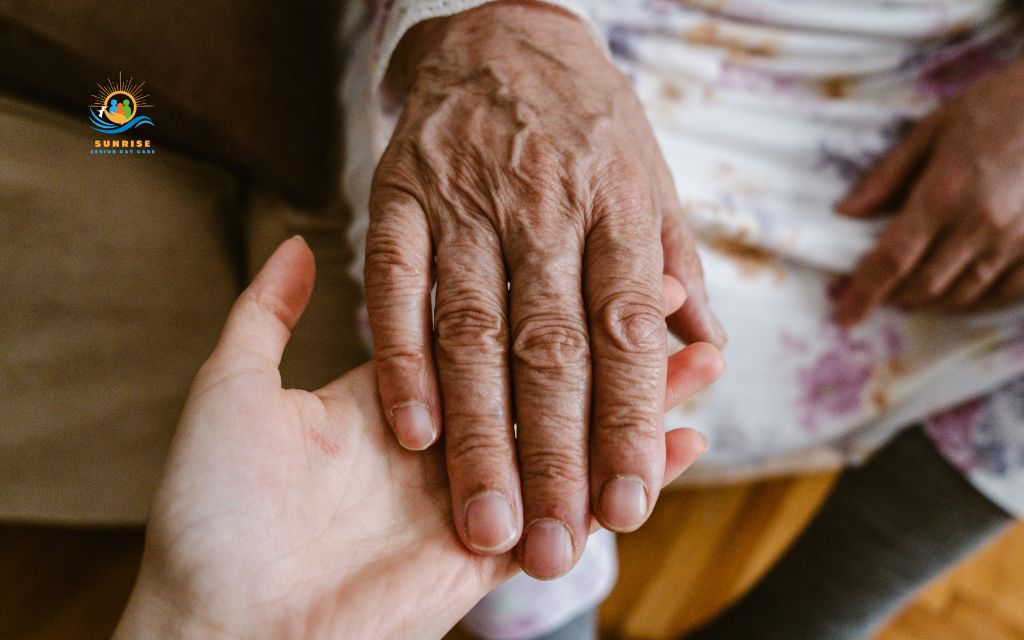Moving from an active adult community to assisted living is rarely an easy conversation to have. Whether you’re a retiree or an adult child watching your parent’s needs, the prospect of transitioning can feel overwhelming.
But here’s what’s important to understand: Transitioning to assisted living is about gaining the right level of support so you can continue living with dignity, purpose, and peace of mind. The goal is to make thoughtful decisions before a crisis forces your hand, allowing you to maintain control over your future even as your needs evolve.
In this guide, we’ll explore exactly how do active adult communities handle transitions to assisted living, and how to prepare yourself or your loved one for this important next chapter. Let’s find out!

What are active adult communities?
Active adult communities, often called 55+ communities or independent retirement communities, are residential neighborhoods designed for healthy, independent adults who are ready to simplify their lifestyle.
These communities welcome residents aged 55 and older who can live without daily assistance or medical supervision.
- Maintenance-free living: No more lawn care, snow removal, or major home repairs
- Lifestyle amenities: Clubhouses, fitness centers, pools, golf courses, and organized activities
- Social engagement: Regular events, clubs, and opportunities to connect with peers
- Age-restricted environment: A community of contemporaries in similar life stages
- Independent living: Residents manage their own daily activities, medications, and healthcare appointments
Signs when it’s time to transition
One of the most challenging aspects of aging is recognizing when our needs have outgrown our current living situation. However, identifying signs early allows for thoughtful, planned transitions rather than emergency moves made under stressful circumstances.
- Difficulty with daily tasks: Struggling with bathing, dressing, grooming, or taking medications.
- Falls or health scares: If you or your loved one has experienced falls, near-misses, or repeated hospital visits, the current living situation may no longer be safe.
- Isolation or withdrawal from activities: Once-active community members who stop attending events, skip social gatherings, or rarely leave their home may be experiencing physical limitations, depression, or cognitive changes.
- Declining home maintenance: When meals become irregular, housekeeping lapses, personal hygiene suffers, or the living space becomes cluttered or unsafe.
- Family concern about safety: If adult children or friends are calling daily to check in, visiting more frequently out of worry, or expressing concerns about safety, it’s worth taking these observations seriously.
- Cognitive changes: Memory lapses that go beyond normal aging (forgetting to eat, getting lost in familiar places, confusion about time or place, or poor judgment) may indicate conditions requiring supervised care.

How do active adult communities handle transitions to assisted living?
Most active adult communities don’t directly manage medical or personal care transitions, that’s not their role, as they’re designed for independent living, not healthcare.
However, the best communities recognize that their residents will face this change, and they play a supportive role in making the process smoother, both emotionally and practically.
Guidance and emotional preparation
One of the most valuable things active adult communities can do is help normalize the conversation about assisted living before crisis strikes.
Community managers and staff often:
- Initiate early, gentle conversations about future planning, framing assisted living as a positive next step rather than a failure or loss of independence
- Provide educational resources about what assisted living actually offers and how it differs from independent living
- Host information sessions or resource fairs featuring local assisted living providers, allowing residents to learn about options in a low-pressure environment
- Connect residents with others who’ve successfully made the transition, reducing fear through peer experiences
Family involvement is encouraged from the start.
Communities often recommend that families tour assisted living facilities together, with the senior participating in every decision. This preserves dignity and control.
Personalized transition support
While active adult communities don’t provide hands-on care, many have developed robust support networks to help residents navigate the practical challenges of moving. Common support services include:
Partnerships with move managers and relocation specialists
These professionals handle the overwhelming logistics of downsizing from a home or apartment to a smaller assisted living space.
They manage sorting belongings, coordinating estate sales or donations, packing, and even setting up the new living space to feel familiar and comfortable from day one.
Referrals to trusted assisted living providers
Staff maintain relationships with nearby assisted living communities and can make warm introductions. This is valuable in cases where both communities share the same ownership group or have established referral networks, as coordination becomes easier.
Trial programs
Some communities work with assisted living partners to arrange trial stays, respite care, or short-term accommodations.
This allows residents to “test” assisted living before committing fully – spending a week or two to experience the meals, activities, staff interactions, and overall environment.
This firsthand experience often helps residents make more confident decisions.

Maintaining continuity and connection
One of the biggest fears about transitioning to assisted living is losing friendships, familiar routines, and the sense of belonging that took years to build in the active adult community.
Encouraging ongoing relationships
Friends from the 55+ community are welcomed to visit, and some communities even invite former residents back for special events, holiday celebrations, or regular social activities.
Maintaining these friendships provides emotional continuity during a period of significant change.
Preserving familiar routines
Whether it’s attending the same exercise class, participating in book clubs, or continuing volunteer work, finding ways to maintain meaningful activities reduces anxiety and promotes faster adjustment to the new environment.
Supporting dual-community participation
Some residents continue participating in clubs, activities, or volunteer programs at their former active adult community even after moving to assisted living.
Collaboration between communities
In markets like Denver, inter-community collaboration has become increasingly sophisticated.
Referral partnerships
Many 55+ communities maintain formal or informal partnerships with assisted living providers, ensuring smooth transitions with pre-arranged processes for record transfers, move-in coordination, and priority placement.
Staff-to-staff communication
When residents transition between partner communities, staff members from both sides often work together to coordinate moving dates, transfer healthcare documentation, arrange room setup, and ensure the resident’s preferences and needs are communicated clearly.
Dual-location options for couple
One of the most difficult scenarios occurs when one spouse needs assisted living while the other remains healthy and independent. Some community networks have developed solutions where couples can live in different care settings within the same campus or network, allowing them to maintain their relationship while each receives appropriate care.
Transition coordinators
Larger organizations sometimes employ dedicated transition coordinators who specialize in helping residents move between care levels, serving as a single point of contact throughout the process.

Family communication and aftercare
Family involvement
Research confirms that family engagement is critical to successful transitions. Communities encourage families to schedule regular check-ins during the first few months, attend community events with their loved one, and maintain visible presence to ease anxiety.
Open communication
Staff help families understand what to expect, recognize normal adjustment periods versus concerning signs, and know when additional support might be needed.
Post-move follow-up
Some communities maintain contact with residents who’ve moved to assisted living, checking in periodically to see how they’re adjusting and offering support. This might include phone calls, visits, or connecting families with additional resources like support groups or counseling services.
Sharing resources
Communities often provide families with educational materials about the adjustment process, tips for supporting their loved one, and information about local caregiver support services.
The guiding principle
Transitions are processes, not single events. The first 3 – 6 months in assisted living are the most challenging, and ongoing support during this window significantly improves outcomes.
Overcome the emotional side of transitioning
For many people, their home in an active adult community represents hard-earned independence, and a symbol of the retirement lifestyle they’d envisioned. Leaving it can feel like admitting defeat, acknowledging vulnerability, or losing a fundamental part of your identity. These feelings are valid and deserve recognition.
Common emotional challenges
- Fear of losing autonomy: Worrying that assisted living means giving up control over daily decisions, schedules, and lifestyle choices
- Grief over lifestyle changes: Mourning the loss of a private home, personal routines, and the freedom to come and go without accountability
- Shame or embarrassment: Feeling that needing help represents personal failure or weakness
- Anxiety about the unknown: Uncertainty about what daily life will actually be like in assisted living
- Reluctance to burden family: Not wanting to worry adult children or become a source of family conflict
- Guilt about cost: Concern about spending down assets that might have been intended as inheritance
Tips to make the transition easier
- Start conversations early: Don’t wait for a crisis to discuss possibilities. Make it a gradual topic of conversation, not a sudden declaration.
- Involve the person in decisions: Let the person tour communities, express preferences, and maintain as much control over the process as possible.
- Focus on what’s gained, not just lost: Better meals, medication management, housekeeping services, transportation assistance, safety monitoring, and new social opportunities.
- Maintain connections: Many assisted living communities welcome visits from friends who still live independently. Staying connected with your former community helps ease the transition.
- Allow time to grieve: It’s okay to feel sad, scared, or angry about the change. These emotions are part of the process.
- Seek support: Counselors, social workers, senior transition specialists, and support groups can provide valuable emotional support during this time.

Conclusion
Transitioning from an active adult community to assisted living is a significant life change, but it doesn’t have to mean losing your independence or sense of self. It’s about evolving your lifestyle to include the support you need while maintaining dignity, connection, and quality of life.
The most successful transitions share common elements: they’re planned ahead of time rather than made in crisis, they involve the person who’s moving in every decision, and they focus on maintaining relationships and routines that matter most.
Reach out to local assisted living communities in the Denver area to learn about their programs and services. The peace of mind that comes from being prepared is invaluable.
Your Partner Through Life’s Transitions
At Sunrise Senior Daycare, we support Denver families navigating care transitions with comprehensive programs. Whether you’re planning or need immediate support, our daycare services provide respite care for family caregivers, meaningful social connections during transition periods, and guidance on Denver’s senior care options.
Need support for your family’s care journey? Contact Sunrise Senior Daycare: (303) 226-6882
Frequently asked questions (FAQs)
Can I stay in the same community when I need more care?
Usually no. Most active adult communities provide only independent living without medical staff or personal care services. When you need assisted living, you’ll need to move to a different facility.
What are the signs it’s time to move from independent living to assisted living?
Watch for difficulty with daily tasks like:
- Bathing, dressing, or managing medications
- Frequent falls or balance issues
- Declining housekeeping and personal care
- Increased isolation or withdrawal from activities
- Memory problems beyond normal aging
- Family concerns about safety.
If you notice several of these signs, talk with your doctor and family about whether additional support is needed.
How much does assisted living cost compared to a 55+ community in Denver?
In 2025, Denver active adult communities typically cost $2,000 – $3,500/month for housing and amenities only. Assisted living costs $4,500 – $6,000+/month but includes meals, housekeeping, personal care assistance, medication management, and 24-hour staffing.
How can families make the transition easier for their loved ones?
Start planning 6-12 months ahead when possible and include your loved one in all decisions and tour communities together. Start conversations early before crisis forces rushed decisions and let them express preferences.




